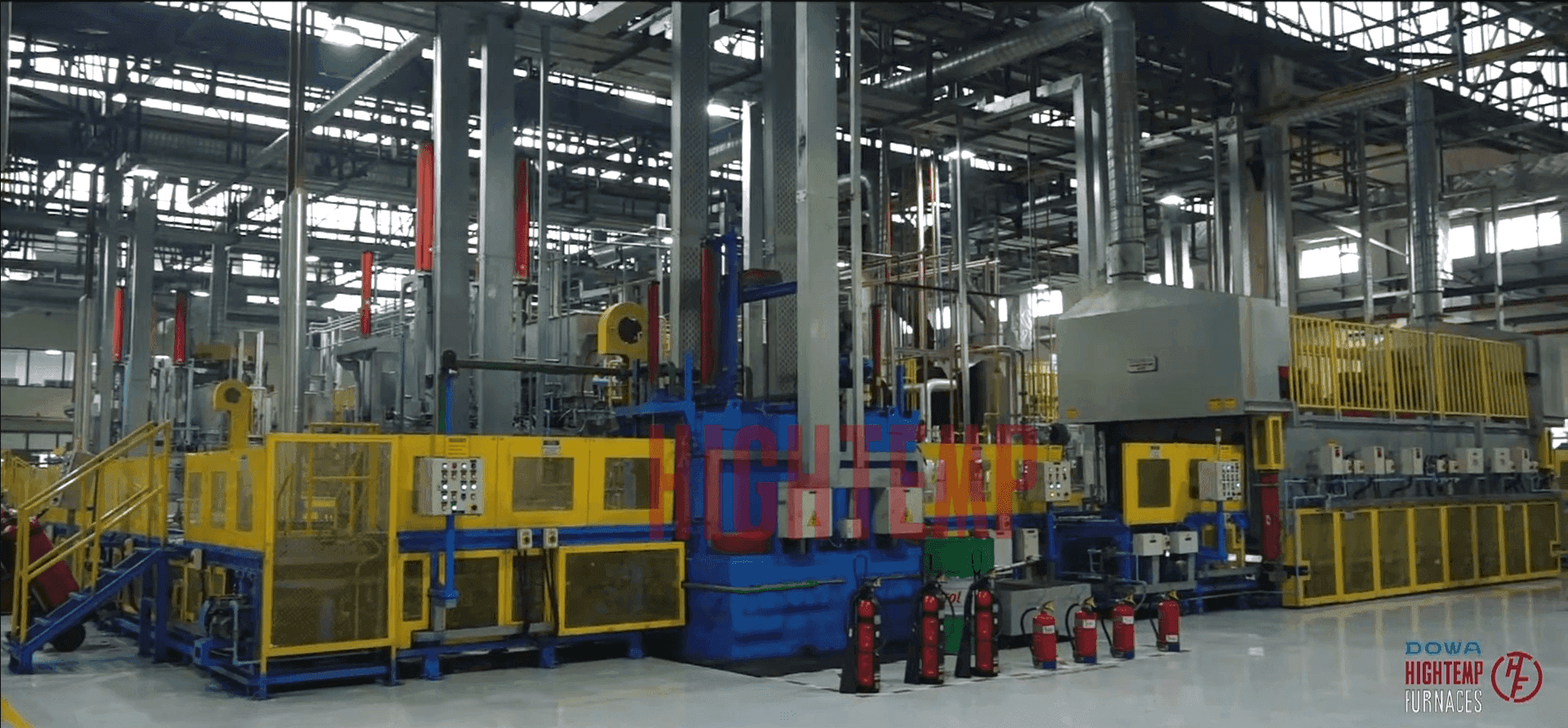- Precise Atmosphere Control: Maintains desired carbon potential, ensuring consistent case depth and microstructure. Prevents oxidation and decarburization for enhanced surface finish.
- Energy Efficiency: Optimized insulation and heat recovery systems reduce energy consumption.
- High Uniformity: Uniform heating and quenching deliver consistent mechanical properties.
- Flexibility in Process Control: Adjustable temperature, atmosphere, and quenching profiles for various material grades.
- Improved Productivity: Batch processing allows simultaneous heat treatment of multiple components, saving time.


Our Sealed Quench Furnace is ideal for the heat treatment of components like gears, shafts, crankshafts, pins, bolts, fasteners, and tool & die parts. It offers a controlled environment for carburising processes, which are critical for enhancing the mechanical properties of materials such as EN8, EN9, EN19, EN24, 16MnCr5, 20MnCr5, SAE 8620, and EN31. Carburising is used to add carbon to the surface of low-carbon steels to enhance their hardness and wear resistance, while keeping the core material tough and ductile. After carburising, tempering is performed to reduce brittleness and improve the toughness of the hardened surface. It also helps relieve internal stresses that may result from the quenching process. This furnace can perform other heat treatment processes, including hardening, carbonitriding, normalizing, nitrocarburizing, nitriding, austempering, neutral hardening, annealing, and bright hardening.


The Semi-Continuous Sealed Quench Furnace by HIGHTEMP is a high-performance heat treatment solution, expertly designed for carburising/carbonitriding and tempering processes. It enhances surface hardness, wear resistance, and core toughness, making it the ideal choice for treating components such as gears, shafts, crankshafts, pins, bolts, fasteners, and bearings. Engineered to process material grades like Medium-Carbon Steels (EN8, EN9), Alloy Steels (EN19, EN24, SAE 4140), Low-Alloy Steels (16MnCr5, 20MnCr5, SAE 8620), and High-Carbon Steels (EN31), HIGHTEMP's furnace ensures superior durability and reliability. Trusted by industries including automotive, aerospace, and heavy machinery, this furnace delivers consistent, precise results while improving component performance and longevity.


The HIGHTEMP Continuous Gas Carburising Furnace is an advanced heat treatment solution designed for high-volume production and precise carburising of components. Built for efficiency and consistency, this furnace uses a continuous single-track design, making it ideal for industries that demand superior quality, cost-effective operations, and high throughput. Operating at temperatures of up to 950°C, the furnace introduces carbon into the surface layer of steel components to improve hardness, wear resistance, and fatigue strength, while maintaining a tough core. With options for endothermic gas or nitrogen-methanol atmospheres, it ensures optimal carburising conditions tailored to specific requirements.


